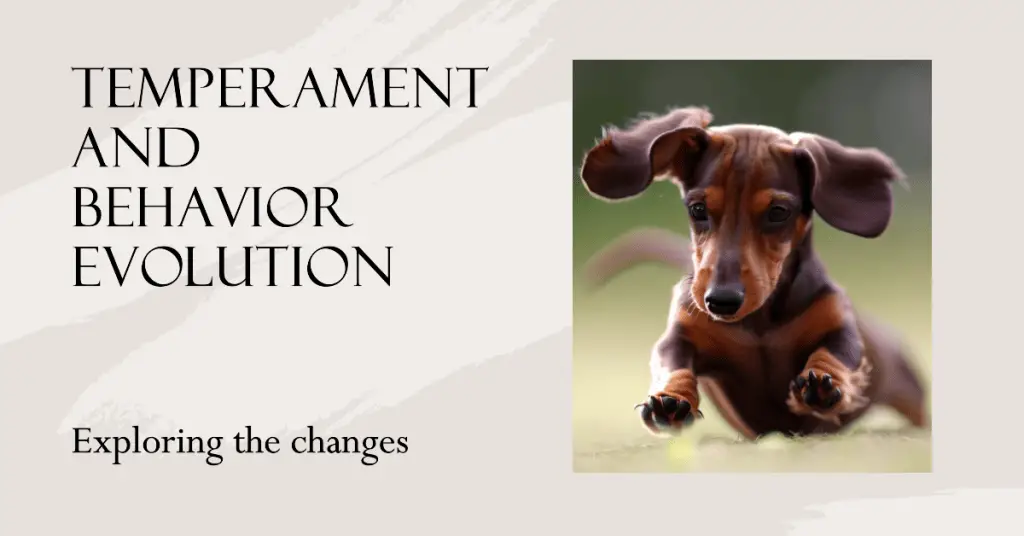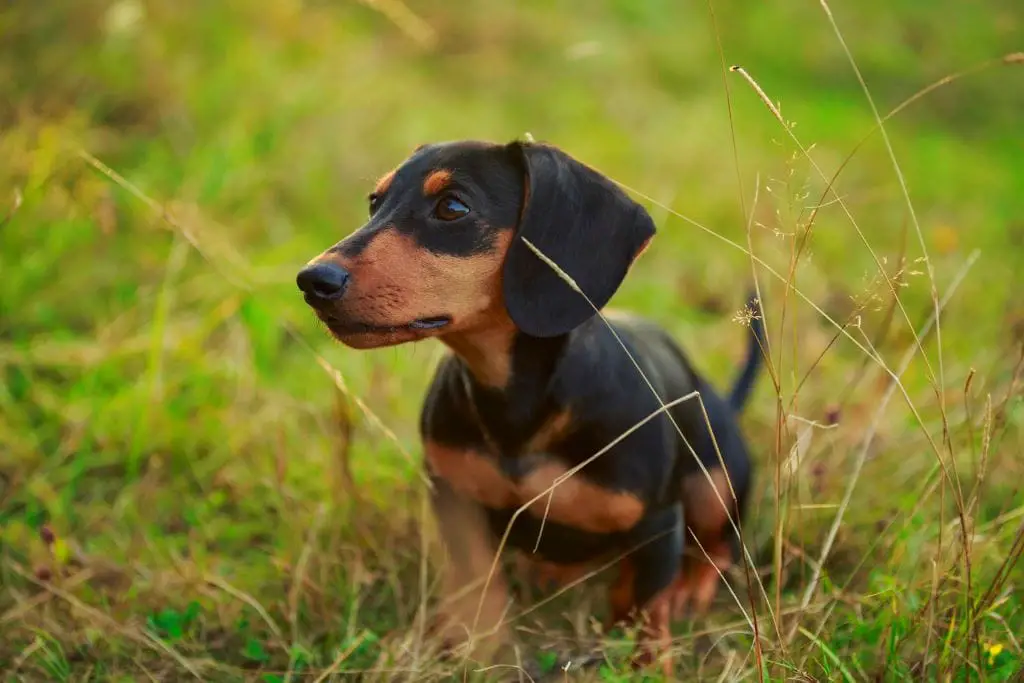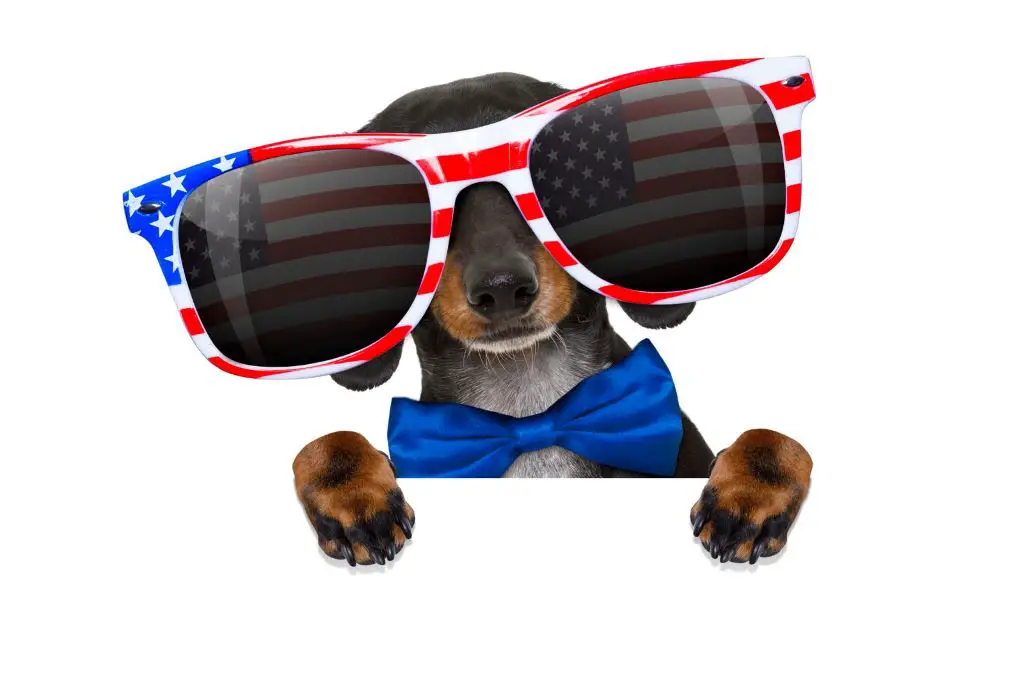Are you a dachshund lover? If so, have you ever wondered how this adorable breed has changed over the centuries?
Dachshunds have come a long way since their origin as hunting dogs in Germany. From changes in size and appearance to shifts in temperament and behavior, dachshunds have evolved into beloved companion animals that fill our homes with love and joy.
As you sit with your furry friend curled up on your lap, it’s hard to imagine that these little pups were once fierce hunters chasing game through the woods. But as we explore the evolution of dachshunds, we’ll discover just how much they’ve changed over time.
Join us on a journey through history as we examine the factors that have shaped this iconic breed into the lovable companions we know today.
The Origin of Dachshunds as Hunting Dogs
You’ll be fascinated to know that dachshunds were originally bred as hunting dogs, with their long bodies and short legs perfectly suited for tracking small animals like badgers. This dog breed was first developed in Germany during the 15th century, where they were used to hunt badgers and other burrowing animals such as rabbits and foxes.
Their unique body shape allowed them to easily dig into underground burrows and chase after their prey. Dachshunds quickly became popular among German hunters due to their fearless nature and ability to work independently. Over time, different variations of the breed were developed for specific types of hunting.
For example, miniature dachshunds were bred to hunt smaller game like rats and ferrets, while standard dachshunds were used for larger prey like wild boar. Despite being primarily used for hunting purposes, dachshunds also gained popularity as companion pets among German nobility during the 18th century.
Today, dachshunds are still known for their energetic personalities and playful demeanor – a testament to how this breed has evolved over the centuries from fierce hunters to beloved family pets.
Changes in Dachshund Size and Appearance
It’s fascinating how these little pups have changed in appearance and size over time. Dachshunds were originally bred to hunt badgers, so their long and narrow bodies were perfect for chasing prey into tight burrows. However, as their popularity grew as companion dogs, breeders began to experiment with different sizes and coat types.
One of the most significant changes in dachshunds’ appearance is their size. While the standard-size dachshund remains popular today, there are also miniature and even toy variations of the breed. These smaller sizes were achieved through selective breeding over many generations, resulting in dogs that are just a fraction of the original size.
In addition to changes in size, dachshunds have also undergone changes in coat type. Originally bred with short hair for hunting purposes, they now come in a variety of coats, including long-haired and wire-haired varieties. These different coat types not only provide aesthetic variety but can also affect a dog’s temperament and health needs.
Overall, it’s clear that while dachshunds may have been bred for a specific purpose initially, they’ve evolved into beloved companions whose physical traits continue to change over time.
The Shift from Hunting to Companion Animals
If you believe that dogs can serve as loyal companions, then you may be interested to know that dachshunds were originally bred for hunting purposes before becoming popular household pets. They were trained to hunt badgers and other small animals that hid in underground burrows.
However, over time, the need for their hunting skills decreased. As a result, they shifted from being working dogs to being companion animals. The shift from hunting to companion animals led to changes in dachshund behavior and temperament. They became less aggressive and more affectionate towards humans.
This made them the perfect fit for families seeking loyal and loving pets. Additionally, their small size and adaptable nature made them ideal for apartment living. Today, dachshunds are renowned as beloved family pets all around the world.
Their unique appearance, playful personalities, and adorable antics make them an excellent addition to any household looking for a furry friend who’s always up for some fun and cuddles!
Temperament and Behavior Evolution

As dachshunds transitioned from hunting to companionship, their personalities and behaviors naturally evolved towards being more affectionate and friendly with humans. Today, these dogs are known for their loyalty and devotion to their owners. They’ll follow you around the house, cuddle up on your lap, and greet you eagerly when you come home.
However, dachshunds weren’t always this way. In the past, they were bred to be independent thinkers who could work alone in tunnels underground. As a result, they could sometimes be stubborn or difficult to train. But as their role shifted towards being family pets rather than working dogs, breeders began selecting for traits that would make them more amiable and trainable.
Despite these changes in temperament over the centuries, there are still some characteristic behaviors that dachshund owners should be aware of.
• Dachshunds can be prone to separation anxiety if left alone for long periods.
• They may have a tendency to bark excessively if not properly trained.
• Some dachshunds can be protective of their territory or family members.
• Due to their strong prey drive inherited from their hunting ancestors, they may chase after small animals like squirrels or birds.
• Dachshunds have also been known to dig holes in the backyard due to their instinctive desire to burrow.
Knowing about these tendencies can help owners better understand and care for their furry friends. Despite any quirks or challenges that may arise from owning a dachshund, it’s clear that these beloved pups have come a long way from their days as hunters underground.
The Role of Breeders in Dachshund Evolution
Through intentional selection and breeding, dachshund breeders have shaped the personality and behavior of these beloved dogs. They have created different varieties of dachshunds, each with unique physical and behavioral characteristics. For example, miniature dachshunds were bred to be smaller and more docile than standard-sized dachshunds.
Breeders also play a crucial role in ensuring that dachshunds are healthy and free from genetic defects. By selectively breeding only those dogs without inherited health issues, breeders can help prevent serious health problems from developing in future generations of dachshunds. This is especially important for breeds like the dachshund that are prone to spinal cord injuries.
However, not all breeders prioritize the health and well-being of their dogs over profit. Some unscrupulous breeders may prioritize appearance over temperament or neglect proper socialization practices during early puppyhood. It’s important to do your research before choosing a breeder to ensure that you’re getting a happy and healthy dog from a reputable source. As someone who loves these adorable pups, it’s crucial to be aware of the role breeders play in dachshund evolution.
The Enduring Popularity of Dachshunds as Family Pets
You can’t walk down a street without seeing at least one of these cute and spunky pups – dachshunds have captured the hearts of families all over the world. These little dogs are known for their loyalty, playfulness, and intelligence. They make great companions for people of all ages and are especially popular among families with children.
What makes dachshunds so appealing as family pets? Here are three reasons:
1. They have a big personality in a small package. Dachshunds may be small in size, but they’ve got huge personalities. They love to play, cuddle, and be the center of attention.
2. They’re low-maintenance dogs. Dachshunds don’t require a lot of exercise or grooming compared to other breeds, which makes them ideal for busy families.
3. They’re loyal to their owners. Dachshunds form strong bonds with their owners and will do anything to protect and please them.
If you’re looking for a furry friend who’ll bring joy and companionship into your life, consider adopting a dachshund! With their fun-loving nature and loyalty towards their owners, it’s no wonder why they’ve remained one of the most popular family pets for centuries.
So go ahead – add some spunk to your household by welcoming a dachshund into your home!
Frequently Asked Questions
What is the average lifespan of a dachshund?
Did you know that the average lifespan of a dachshund is around 12-16 years? With proper care and nutrition, your furry friend can live a long and happy life by your side.
Can dachshunds be trained to perform tricks or agility courses?
You can definitely train your dachshund to perform tricks and even excel in agility courses! With their intelligence and eagerness to please, these little dogs are quick learners. Start with simple commands and positive reinforcement to build a strong foundation.
How do dachshunds fare in multi-pet households?
Okay, so you’re wondering how dachshunds do in multi-pet households. Well, they can be a bit stubborn at times but with proper training and socialization, they make great companions for other furry friends. Plus, their loyalty is timeless!
Are there any health concerns specific to dachshunds?
As a dachshund owner, you should be aware of potential health concerns like spinal issues and obesity. Regular exercise and vet check-ups can prevent these problems and ensure your furry friend stays healthy for years to come.
What is the typical personality of a dachshund?
Dachshunds are loyal, playful and protective of their owners. They can be stubborn at times but respond well to positive reinforcement training. Get ready for lots of snuggles and plenty of love from your furry friend!
Conclusion
From their origins as fierce hunting dogs to beloved family companions, these little pups have come a long way over the centuries.
As you reflect on the changes in size, appearance, temperament, and behavior that have occurred in dachshunds over time, it’s clear that breeders have played a significant role in shaping their evolution. And yet, despite the many changes they’ve undergone, dachshunds remain incredibly popular pets today.
So whether you’re already a proud owner of one of these delightful dogs or simply an admirer from afar, take heart in knowing that dachshunds will continue to charm and delight us for years to come. After all, they may be small in size, but they are mighty in heart – just like us!









